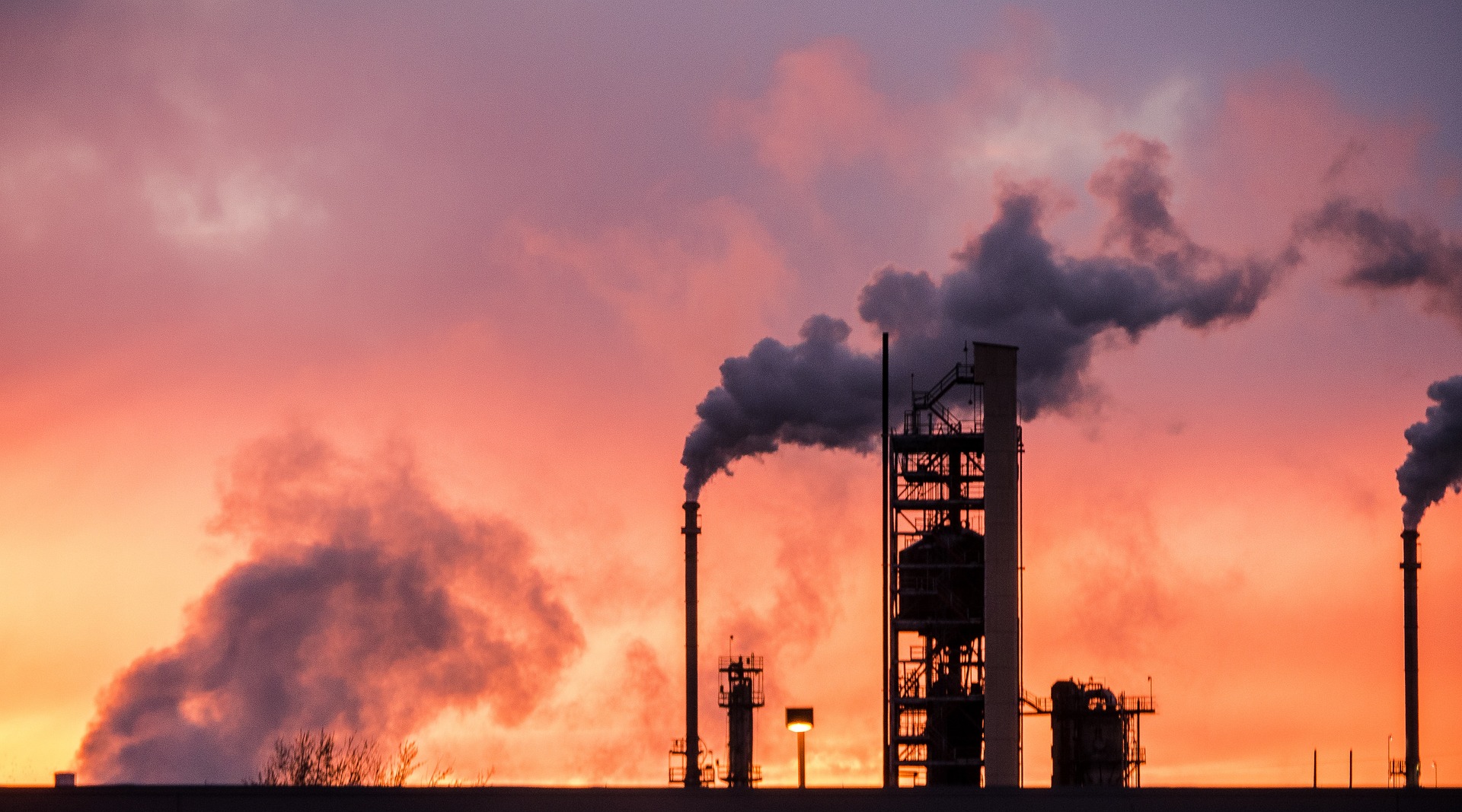BP is a well-known and powerful name in the oil and gas industry. In recent years, a series of incidents involving fires and explosions have raised questions about safety at refineries and drills. More specifically, there are concerns about ongoing safety problems at BP locations that put workers at risk.
Below, the petrochemical injury lawyers at Kherkher Garcia, LLP discuss incidents that raise concerns about safety in BP facilities, and throughout the oil and gas industry. If you have questions or would like a free evaluation of your injury, contact us to learn more.
BP’s History of Explosions
There have been three major explosion incidents involving BP in recent years, and numerous smaller incidents. The three major incidents are:
Husky Toledo Refinery Fire
A fire and explosion occurred at the BP-Husky Toledo Refinery in Oregon, Ohio on September 20, 2022. The fire killed two workers and injured several others.
The fire started in a fuel gas mix drum when workers attempted to correct rising liquid levels. Opening the valves to regulate the overfill caused the naphtha to enter the refinery’s fuel gas system, where it ignited. This incident triggered an explosion, killing two workers.
The fire was extinguished by firefighters after several hours. The refinery was shut down for several weeks for repairs. The Occupational Safety and Health Administration (OSHA) cited BP Products North America for “serious violations” and proposed over $150,000 in fines after finding training and operational deficiencies contributed to the explosion.
The United Steel Workers Local 1-346, which represents workers at the refinery, said in a statement that it was “deeply saddened” by the deaths of the two workers. The union said it would work with OSHA to ensure that the refinery is safe for workers.
The BP-Husky Toledo Refinery is a joint venture between BP and Husky Energy. The refinery has a capacity of 160,000 barrels per day and is one of the largest refineries in the United States.
Deepwater Horizon Disaster
The Deepwater Horizon incident was an environmental disaster that occurred on April 20, 2010, in the Gulf of Mexico. The incident involved the explosion and subsequent sinking of the Deepwater Horizon drilling rig. The rig was owned and operated by BP.
The explosion claimed the lives of 11 workers and injured 17 others. The incident also resulted in a massive oil spill, which continued for 87 days, and is considered one of the largest oil spills in history. The spill released an estimated 4.9 million barrels of crude oil into the Gulf of Mexico, causing extensive damage to marine life, ecosystems, and local economies.
The primary cause of the incident was a blowout in the Macondo well, which was being drilled by the Deepwater Horizon rig. The blowout was caused by a combination of factors, including a faulty cement seal, a failed blowout preventer, and inadequate safety measures. Investigations revealed that BP and its contractors, Transocean and Halliburton, were responsible for several critical failures that led to the disaster.
The Deepwater Horizon incident led to significant legal and financial consequences for BP and its contractors, including billions of dollars in fines, settlements, and legal fees. It also prompted a renewed focus on safety in the oil and gas industry and led to significant changes in regulation and safety standards.
The incident highlighted the importance of maintaining strict safety protocols and contingency plans in the oil and gas industry, and the need for greater accountability and transparency in regulatory oversight. It also underscored the significant environmental risks associated with offshore drilling and the need for sustainable alternatives to fossil fuels.
Texas City Refinery Explosion
The Texas City Refinery explosion, which took place on March 23, 2005, was a tragic industrial accident that resulted in significant loss of life and extensive damage.
The incident occurred when a hydrocarbon vapor cloud ignited, leading to a massive explosion. The blast was so powerful that it caused nearby buildings and structures to collapse, including trailers used as temporary offices for workers. The explosion claimed the lives of 15 workers and injured more than 170 others.
The primary cause of the explosion was determined to be the overfilling of a raffinate splitter tower, which resulted in a release of flammable liquid and vapor. The vapor cloud then found an ignition source, causing the explosion. Investigations revealed that there were deficiencies in process safety management systems, equipment maintenance, and employee training at the refinery.
The Texas City Refinery explosion was one of the deadliest industrial accidents in the United States in recent history. The explosion continues to highlight the importance of maintaining strict safety protocols. It also led to increased scrutiny of the oil and gas industry’s safety practices.
Following the explosion, BP initiated a comprehensive safety review and committed to making significant improvements in safety standards at all its facilities worldwide. The incident served as a catalyst for increased awareness and focus on process safety and risk management within the industry.
BP Incidents Caused by Inadequate Safety and Management
In addition to the three major incidents above, there have been many other incidents at BP facilities that involved inadequate safety procedures and poor management. A few examples include:
-
- In 2002 an oil worker in Alaska was injured when a well he was inspecting blew up. Subsequent investigations revealed inadequate safety procedures related to that well.
- In 2006, an oil spill on the North Slope of Alaska was caused by corrosion buildup in pipes that had not been cleaned in more than a decade. This is Alaska’s largest ever land oil spill.
- In 2005, Hurricane Dennis hit the Thunder Horse oil platform in the Gulf of Mexico. The state-of-the-art BP facility topped over. It was later discovered that engineers incorrectly installed valves that control water flow and buoyancy.
Incidents in the oil and gas industry often cause injuries or loss of life. But even incidents that don’t claim human lives have consequences. Many of BP’s incidents involve harm to the environment and local wildlife, potential contamination of water supplies, and negative outcomes for nearby communities. These are all important factors to consider when it comes to safety.
Safety Standards in the Oil and Gas Industry
Workers in the oil and gas industry deserve a safe work environment. Sadly, every year, thousands of workers become ill or injured while working in this industry. What is even more alarming is that many of the incidents causing injuries are preventable.
Safety standards in the oil and gas industry are designed to protect workers, communities, and the environment from the potential hazards associated with oil and gas exploration, production, and transportation. These standards cover a range of topics, including:
Occupational Health and Safety
Standards that address workplace hazards, such as hazardous materials, confined spaces, working at heights, and equipment safety. These standards require companies to implement and maintain safety programs, conduct risk assessments, and provide training for workers.
Environmental Protection
Standards that address the potential impacts of oil and gas operations on air, water, and soil quality, as well as on wildlife and ecosystems. These standards require companies to monitor and report on environmental impacts, implement pollution prevention measures, and develop emergency response plans.
Process Safety Management
Standards that address the design, operation, and maintenance of facilities and equipment to prevent incidents such as explosions, fires, and leaks. These standards require companies to implement safety management systems, conduct hazard assessments, and develop emergency response plans.
Transportation Safety
Standards that address the safe transportation of oil and gas by pipeline, rail, and other means. These standards require companies to maintain the integrity of pipelines, properly label and package hazardous materials, and provide training for workers involved in transportation.
Emergency Response
Standards that address the preparation, response, and recovery from incidents such as spills, leaks, and other emergencies. These standards require companies to develop and test emergency response plans, provide training to responders, and work with local authorities to coordinate response efforts.
Safety standards in the oil and gas industry are essential to ensuring that these operations are conducted in a safe and responsible manner. By implementing and following these standards, companies can reduce the risk of incidents, protect workers and communities, and minimize the potential impacts on the environment.
Common Causes of Explosions in the Oil and Gas Industry
Explosions in the oil and gas industry can be caused by a variety of factors including human error and unforeseen events. Some of the most common causes of explosions are:
-
- Equipment Failure: The failure of critical equipment, such as pressure vessels, pipelines, or valves, can result in a sudden release of flammable substances that can ignite and cause an explosion.
- Human Error: Mistakes or negligence by employers or workers, such as improper maintenance or repairs, inadequate training, or failure to follow safety procedures, can lead to explosions.
- Process Safety Failures: A lack of adequate safety controls, such as monitoring systems, emergency response plans, or safety management systems, can increase the risk of explosions.
- Natural Disasters: Extreme weather events, such as hurricanes or earthquakes, can damage refinery infrastructure and increase the risk of explosions.
It is important to note that these are just some of the common causes of refinery explosions, and each incident can have unique contributing factors. Refineries have complex systems and processes, and ensuring their safe and reliable operation requires ongoing attention to safety, training, and maintenance.
Common Injuries that Occur in Explosions
Explosions in the oil and gas industry can result in a wide range of injuries to workers and nearby residents. The specific injuries can vary depending on the severity and nature of the explosion. Some of the generally common injuries that occur in explosions include:
-
- Burns: Burns are a common injury in explosions and can range from minor to severe. Burns can be caused by heat, flames, or exposure to hazardous chemicals.
- Trauma: Traumatic injuries, such as cuts, bruises, fractures, or head injuries, can occur from flying debris, falling objects, or impacts during an explosion.
- Respiratory Injuries: Inhalation of toxic chemicals or smoke can cause respiratory injuries, such as lung damage, asthma, or other respiratory illnesses.
- Hearing Loss: Loud noises from the explosion can cause temporary or permanent hearing loss.
- Psychological Injuries: Explosions can also cause psychological trauma, such as post-traumatic stress disorder (PTSD), anxiety, or depression.
Explosions are traumatic incidents that often involve serious injuries or loss of life. Often, injuries sustained in an explosion have a long-term impact on victims and their families. Burns and traumatic injuries often require lengthy treatment, rehabilitation, and inability to work as before.
Contact a Petrochemical Injury Lawyer
At Kherkher Garcia, LLP, we support workers in the oil and gas and maritime industries. If you or a loved one has been injured in a fire, explosion, or other incident at a BP facility, contact us as soon as possible. Our petrochemical injury lawyers have decades of experience recovering compensation for injured workers. In fact, we have recovered millions of dollars on behalf of clients injured in the oil and gas industry.
Recovering from an explosion injury is difficult enough – you don’t have to fight for your rights or compensation alone. Let Kherkher Garcia help you explore your options for recovering maximum compensation. Call 713-333-1030 to get started with your free case evaluation.
Resources:
- https://www.pbs.org/wgbh/pages/frontline/the-spill/bp-troubled-past/
- https://www.enn.com/articles/9927-bp-again-accused-of-safety-violations-in-alaska
- https://www.npr.org/2010/05/06/126564739/previous-bp-accidents-blamed-on-safety-lapses
- https://www.independent.co.uk/climate-change/news/beyond-petroleum-or-beyond-the-pale-bp-left-out-in-the-cold-125608.html
- https://www.reuters.com/business/sustainable-business/us-investigators-cite-bp-training-safety-failures-ohio-refinery-deaths-2023-03-16/


